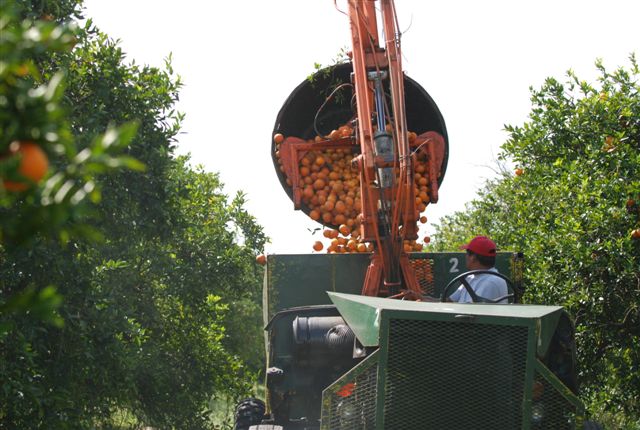Florida accounted for 14% of H-2A jobs certified in 2020, making it the leading user of the temporary guest agricultural worker program. The U.S. Department of Agriculture’s Economic Research Service (USDA/ERS) recently reported that Florida and five other states accounted for 55% of the certified H-2A jobs in 2020. The other large H-2A users were Georgia (10%), Washington (10%), California (9%), North Carolina (8%) and Louisiana (4%).

California and Florida are the nation’s largest producers of citrus. Earlier this year, in comments about the wage rate for H-2A workers, Florida Citrus Mutual stated “it is estimated that over 95% of the Florida citrus crop is harvested by H-2A workers.”
The H-2A program allows U.S. agricultural employers who anticipate labor shortages to be certified by the U.S. Department of Labor to employ guest workers. Over the last decade, the number of jobs certified to be filled by H-2A workers increased from 75,000 in 2010 to 275,000 in 2020. By 2020, these workers accounted for an estimated 10% of the average employment on U.S. crop farms.
Nationally, the average H-2A contract offered 24 weeks of work and 39.3 hours per week at an average hourly wage of $13.
The USDA/ERS reported that most of the H-2A jobs certified in Florida are in the state’s central and southern parts. Hillsborough County had around 6,700, or 17%, of the 39,064 H-2A jobs certified in Florida in 2020. It was followed by DeSoto County with about 4,000 H-2A jobs; Hendry with 3,000; Polk with 2,900; and Manatee with around 2,800. Citrus is produced in all of those counties. Most of Florida’s H-2A jobs were in crop and crop support.
The USDA/ERS noted that California is the top employer of U.S.-hired farmworkers, accounting for about a third of U.S. farm employment and wages. However, the state is a latecomer to the H-2A program.
See the full USDA/ERS report on H-2A here.
Source: U.S. Department of Agriculture Economic Research Service










